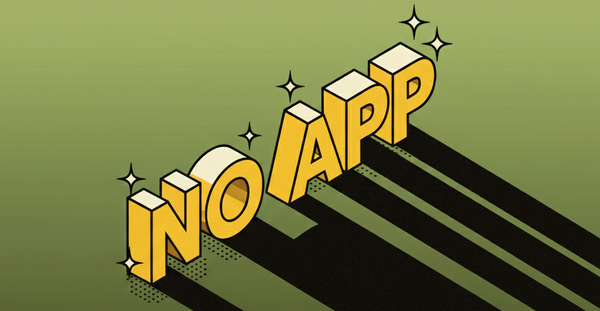Types of Discounts: Why Some Work, Some Fail, and What Shoppers Really Respond To
Learn the psychology behind types of discounts, the risks of overusing them, and how to build a discount strategy that boosts sales.

Lichen Zhang
Oct 14, 2025 · 10 min
Product bundling is a potent strategy for e-commerce success. While apps offer convenience, understanding the manual methods provides greater control, potentially saves costs, and deepens your understanding of Shopify's capabilities.


Lichen Zhang
Oct 14, 2025 · 10 min
Lichen Zhang is the co-founder of Simple Bundles, where she leads product and design. She has over 7 years of experience in ecommerce SaaS, previously contributing to industry leaders like Faire (wholesale marketplace) and Smile.io (loyalty).
Product bundling is a potent strategy for e-commerce success, and you're here because you want to master it on Shopify without adding another app to your store. While apps offer convenience, understanding the manual methods provides greater control, potentially saves costs, and deepens your understanding of Shopify's capabilities. This comprehensive guide will walk you through various app-free bundling techniques, from simple setups to more advanced configurations to sell and create bundles, ensuring you can implement effective product bundles that drive sales and delight your customers. Let's dive in.
Product bundling isn't just a trend; it's a proven sales strategy. By grouping complementary items, you offer enhanced value, simplify the shopping experience, and boost your bottom line.
When customers purchase a bundle, they often spend more than they would on individual items. This direct increase in AOV means more revenue per transaction, optimizing your marketing efforts. You're effectively upselling without the hard sell.
Bundles can entice customers who might otherwise buy nothing or just one item. The perceived value of a package deal encourages larger purchases, leading to a higher overall sales volume for multiple products. Think of it as a gentle nudge towards a bigger basket.
Bundles simplify decision-making. Customers appreciate the convenience of buying related products together, knowing they're getting a curated solution. This thoughtful approach improves satisfaction and encourages repeat business. You're solving a problem for them.
Bundling is an excellent tactic for moving slow-selling stock. Pair less popular items with best-sellers in an attractive bundle, and watch them fly off the digital shelves. It’s a win-win: customers get a deal, and you reduce excess inventory. No more dusty virtual shelves!
Opting for an app-free bundling strategy in Shopify presents a unique set of challenges, but the rewards—control, cost savings, and a deeper understanding of your platform—make it entirely worthwhile.
Shopify, by default, isn't built for native bundling where multiple distinct SKUs are automatically grouped and sold as a single "bundle" SKU with synchronized inventory. Each product variant typically manages its own inventory. This means our app-free methods will often involve creative workarounds to simulate this functionality. You'll be using existing features in innovative ways.
Choosing the DIY route means you have full control over your bundling logic, pricing, and presentation. You avoid monthly app subscription fees, potential conflicts with other apps, and reliance on third-party developers for updates. It's a hands-on approach that empowers you to tailor bundles precisely to your business needs. You become the master of your bundling destiny.
This method is ideal for relatively simple bundles where the components are consistent and don't change frequently. It involves creating a new product that represents the bundle itself.

Pros:
Cons:
This method is less about creating a static "bundle product" and more about generating a dynamic bundled offer. It's excellent for bespoke bundles, special promotions, or when you want to offer a discount on multiple items without creating a new product.
This method bypasses a single "bundle product" and instead focuses on offering a specific set of products at a discounted rate via a custom link or direct invoice.
Pros:
Cons:
This method leverages Shopify's theme architecture to create a more integrated bundling experience. It's the closest you'll get to app-like functionality without an actual app, but it does require some coding knowledge or the assistance of a Shopify developer.
Theme customization involves modifying your Shopify theme's Liquid code, JavaScript, and CSS. The goal is to create a UI element on a product page that allows customers to "add to cart" a pre-defined set of products simultaneously, potentially with a combined discounted price. This could manifest as:
This method often involves:
Pros:
Cons:
Regardless of the method you choose, a few universal principles will ensure your bundles are a smashing success.
Don't leave customers guessing! Clearly list every item included in the bundle, its original value, and the savings they're getting. Use bullet points and bold text for readability. Transparency builds trust.
A single, high-quality image of the entire bundle is crucial. Show all components together, beautifully arranged, so customers can instantly grasp the value. A picture is worth a thousand bundled products! 📸
Offer a genuine incentive. Bundles should present a clear saving compared to buying items individually. Experiment with different discount percentages (e.g., 10%, 15%, 20%) to find your sweet spot that encourages purchases while maintaining healthy margins.
Don't hide your bundles!
This cannot be stressed enough, particularly for Method 1. Regularly check stock levels of all component products. If you oversell a bundle because one item ran out, you'll face unhappy customers and logistical headaches. Set up alerts if your inventory management system allows.
While app-free bundling offers flexibility and cost savings, there comes a point where an app might be the more efficient and scalable solution for your business.
If you're managing dozens or hundreds of bundles, or processing a high volume of bundle orders daily, manual inventory adjustments (Method 1) or individual draft orders (Method 2) become unsustainable. Apps automate these processes, freeing up your time.
The primary limitation of app-free bundling is inventory. Apps are built to automatically track and synchronize the inventory of individual components within a bundle. This prevents overselling and reduces manual errors, a huge peace of mind.
Do you need "build your own bundle" options, volume discounts within bundles, subscription box bundles, or gift-with-purchase logic? These complex functionalities are typically beyond the scope of app-free solutions and are where dedicated bundling apps shine. They offer sophisticated rules and dynamic pricing.
You now have a solid understanding of how to implement product bundles in Shopify without relying on external apps. Whether you choose the straightforward Manual Variant Method for simple packages, the flexible Draft Order + Discount Method for custom offers, or delve into Theme Customization for a deeply integrated experience, you're equipped with actionable strategies.
Remember, the key is to start simple, monitor your results, and scale up as your business grows. Each method has its trade-offs, primarily revolving around inventory management and the level of automation. By carefully considering your needs and resources, you can confidently create compelling product bundles that boost your sales and enhance your customers' shopping journey.
You now know how to set up Shopify bundles manually. Start small, test, and refine. But if you’re serious about scaling or want to boost sales with bundles like multi-packs, mix and match sets, and complementary products, a bundling app will save time and eliminate errors.
Simple Bundles is a Shopify app built specifically for this—designed to help merchants match bundles to their exact needs, manage inventory automatically, and grow their online store with smart bundling strategies.
If you’re looking for a bundle app, refer to The Best Shopify Bundling Apps to Increase AOV in 2025.